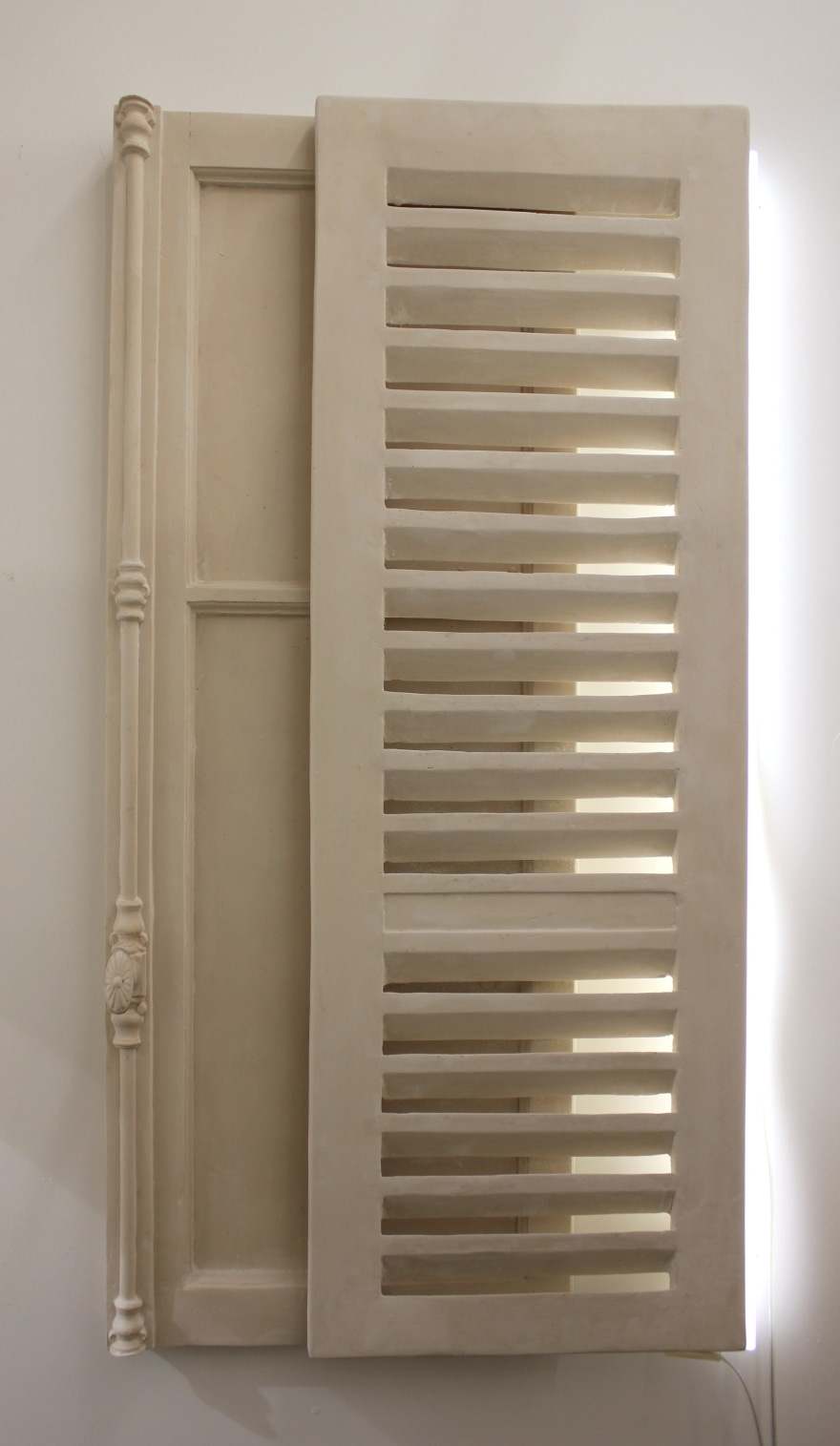11 january 2022, Wouter van den Eijkel
Feipel & Bechameil at Fontana | Interview with Martine Feipel
Galerie Fontana hibernates with Movement, a group exhibition with a large number of their artists. In addition to a wall-filling installation by Claudy Jongstra, there are three works by the renowned French-Luxembourg duo Feipel and Bechameil. We talked to Martine Feipel about her work.
The couple Martine Feipel (Lu, 1975) and Jean Bechameil (Fr, 1964) began their artistic collaboration in 2008. Three years later, they represented Luxembourg at the Venice Biennale. Since then, their work, once described by the Guardian as "an intriguing marriage between chic design and slapstick surrealism with apocalyptic overtones", has received much attention. For example, they took part in the Lustwarande (2015), had a big show in Casino Luxembourg (2017) and made a large installation in public space in Nantes (2020).
The duo mainly focuses on making large installations made of synthetic resin. Often the work is about architecture and the ideas and dreams that lie and were hidden behind it. If you go by the images and the colours, you will quickly arrive at Modernism and the accompanying ideals of elevation, such as the belief in the mealability of society.
Those apocalyptic overtones that the Guardian refers to are therefore not completely out of the blue. For example, if you look at the names of works and shows such as Theater of Disorder (2017), Ballet of Destruction (2016), Un Monde Parfait (2013). In the latter show, for example, they scrutinized the good intentions behind of the Parisian Cité4000. While in reality 4 of the 5 gallery flats had already been blown up and the last one awaits an uncertain fate, as renovation would be too expensive, Feipel and Bechameil built a scale model in synthetic resin based on the building plan that they found in the French national archive. A lasting reminder of a philosophy that was once popular, but turned out to be wrong.
Why does the visual language of Modernism have such a prominent place in your work?
For years, our work has questioned the influence of Modernism, because it is so ubiquitous. It has a huge influence on our daily lives, on architecture, how we experience space and our ideas about progress.
Is that also the reason that your motorised works have a Modernist appearance?
Yes, we got the idea to use moving parts when we did a residency in Luxembourg a few years ago. We walked through the grounds of a steel manufacturer, once Luxembourg's largest employer, where it had died out. Our presence didn't matter, as we encountered a fully automated ballet of robots. In our works we deploy this type of robot in a non-productive way, in order to question our notions of efficiency and progress.
Your work is regularly described as dystopian. Is your work also a kind of warning?
No, not that, that would be arrogant. We only question our environment. We like the idea of appropriation. It’s a kind of punk attitude in which we use one thing to do something completely different with it, such as with those industrial robots. With that we create something new, something a bit more poetic.
You have done a lot of work that is in public space. What is the main difference with an exhibition in a gallery or museum?
In a sense, works on display in public spaces are more democratic than works seen in a gallery, because not everyone will step inside. In public space, the work can touch anyone who happens to pass by. In 2020, for example, we made a number of sculptures of ovens that local residents can use as pizza ovens in a new business district in Nantes. These sculptures can thus create relationships between local residents. Our work This many dreams, for example, consists of a bus on a beach. You can get on the bus. This way you can make the work of art your own, get the feeling that the bus is also yours. Moreover, you can experience the environment differently.
You often use music or soundscapes for your museum exhibitions. Why is that?
Our installations are quite large. They often have an architectural character; you can walk around it. We want to offer a kind of total experience, so we decided to add sound so that you can fully immerse yourself.
Gallery Fontana is moving
Movement is the last exhibition at its trusted address, Lauriergracht 11. At the end of this month, the gallery will cross the canal. Fontana moves to a larger space over two floors at Lauriergracht 142.
The group exhibition Movement can be seen until 28 January at the Fontana gallery in Amsterdam.



